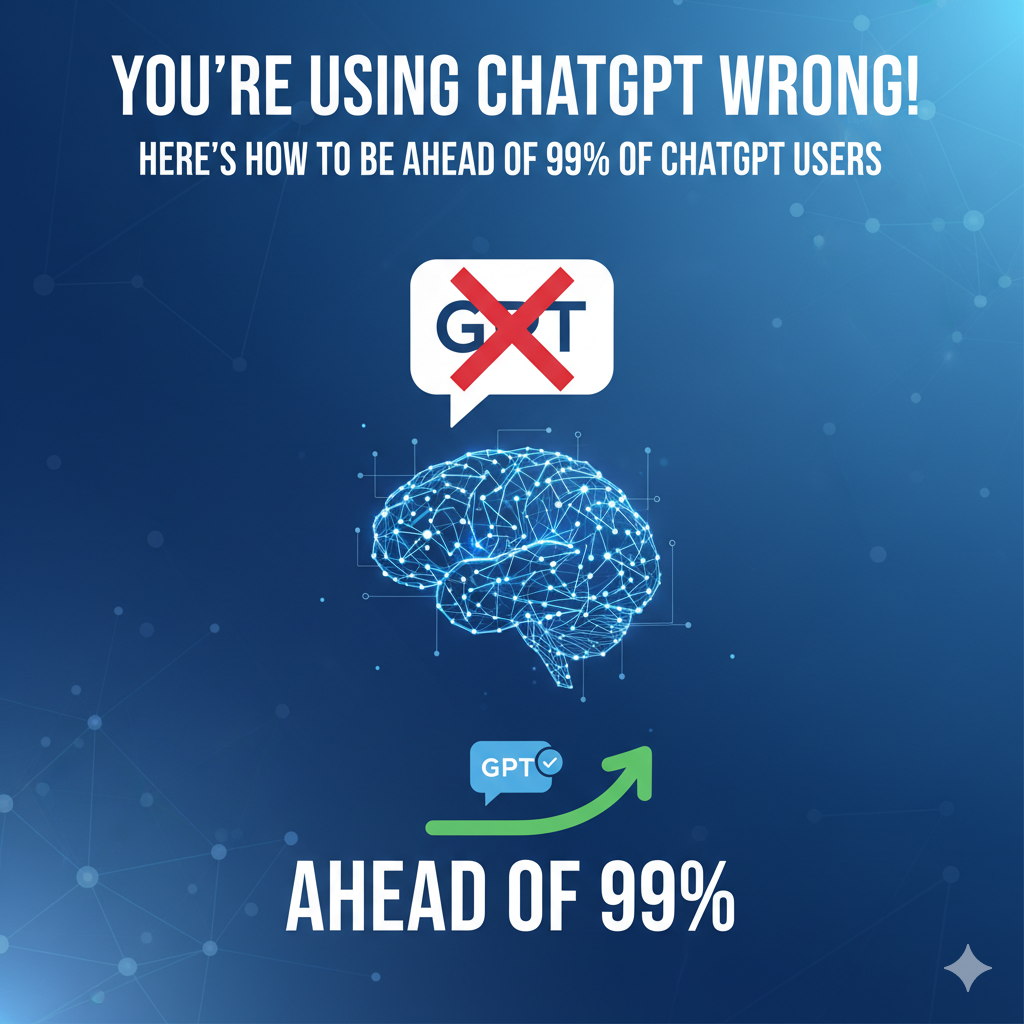
ChatGPT is one of the most powerful AI tools available today, but here’s the truth—most people are using it completely wrong.
They type in a basic question, get a decent answer, and stop there. The problem? They never unlock ChatGPT’s real potential.
In this guide, you’ll learn exactly how to use ChatGPT the right way, so you can be ahead of 99% of users who are stuck with average results.
Why Most People Fail with ChatGPT
The majority of users make three big mistakes when prompting ChatGPT:
- No examples in prompts – Without showing ChatGPT what you expect, the results are vague.
- Not using roles – Roles let you control ChatGPT’s personality, tone, and expertise.
- Forcing ChatGPT to guess – If you don’t provide enough context, it fills the gaps with assumptions.
The result? Responses that sound okay but aren’t optimized for your needs.
If you want high-quality outputs, you need a better approach: prompt engineering.
What Is Prompt Engineering (And Why It Matters)?
Prompt engineering is the art of designing instructions that guide AI to give you the exact results you want.
Think of ChatGPT like a brilliant assistant—if your instructions are vague, it will try its best but probably miss the mark. If your instructions are clear and structured, you’ll get expert-level results.
By mastering prompt engineering, you can:
- Generate content that sounds professional and polished.
- Solve problems faster with tailored answers.
- Unlock advanced use cases like coding, strategy, or creative writing.
4 Prompt Engineering Techniques to Master
Here are four practical techniques that will put you ahead of 99% of ChatGPT users:
1. Few-Shot Prompting
Instead of asking for something once, provide examples. For instance:
❌ “Write a product description.”
✅ “Here are two product descriptions I like. Please write a similar one for my new product.”
This method trains ChatGPT to mimic your desired style.
2. Role Prompting
Assign ChatGPT a role before giving instructions.
❌ “Explain SEO to me.”
✅ “You are an SEO expert with 10 years of experience. Explain SEO to me like I’m a beginner.”
This simple trick changes the entire quality of the answer.
3. Step-by-Step Instructions
Don’t leave room for guesswork—break your request into steps.
❌ “Create a marketing strategy.”
✅ “First, outline 3 key goals. Then suggest 5 marketing channels. Finally, provide a timeline for execution.”
4. Refinement Loop
Never settle for the first draft. Instead, iterate.
Ask ChatGPT to:
- Expand
- Simplify
- Rewrite in a different tone
- Make it more persuasive
This way, you mold the output into something far better than a one-shot response.
Be Ahead of 99% of ChatGPT Users
Most people will continue to use ChatGPT as a casual Q&A machine. But not you. With these techniques, you’ll start using it as a powerful productivity and creativity tool.
The key is simple: treat ChatGPT like a collaborator, not a search bar.
Final Thoughts
If you want to get consistent, high-quality results, don’t rely on generic prompts. Master prompt engineering and watch how ChatGPT transforms from “just another tool” into a real competitive advantage.
🚀 Ready to get ahead? Start applying these techniques today—and you’ll already be miles ahead of 99% of ChatGPT users.
👉 Pro tip: Consider creating a prompt library where you save your best-performing prompts. Over time, this becomes your personal AI toolkit.

